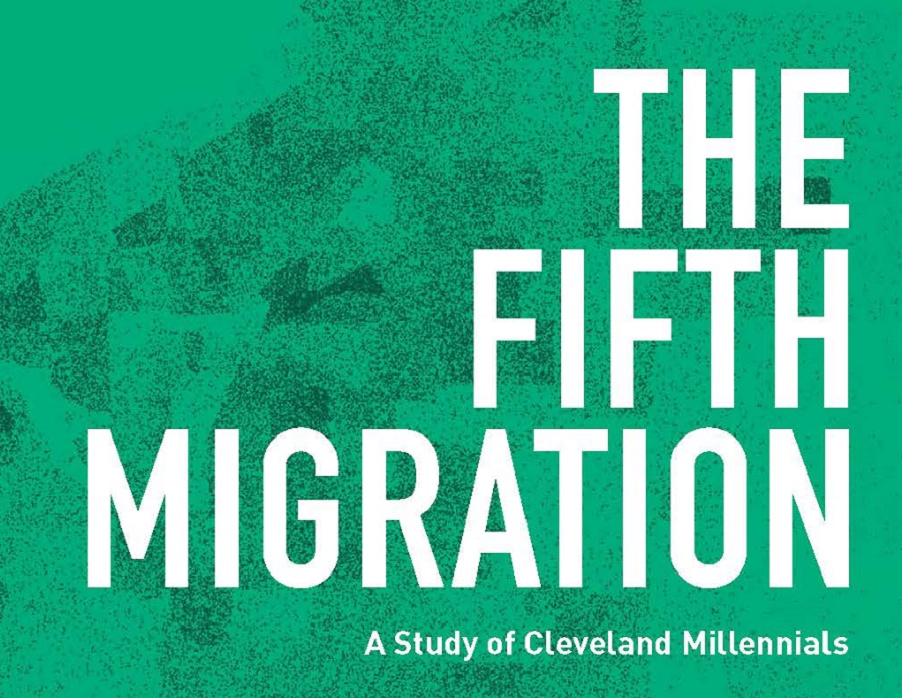If you are a millennial living in Northeast Ohio, you’re not alone. In fact, you may be part of the “fifth migration,” a national term for the re-urbanization of metro areas. It’s a population trend that’s hitting Cleveland in a big way, and it’s captured in a first-of-its-kind, in-depth look at millennials in Northeast Ohio, commissioned by the Cleveland Foundation and produced by The Center for Population Dynamics at Cleveland State University.
So what did the study reveal?
- To start, Cleveland ranks eighth in the nation in the growth rate of college-educated millennial residents aged 25-34, between 2011 and 2013. In fact, we tied for eighth place alongside Seattle and Miami, so we’re in good company.
- Cleveland is also eighth in the nation in the concentration of highly-educated millennials in the workforce (those with a graduate degree). The city got a so-called “brain gain” thanks to this group, but the statistics also show a higher concentration of millennials overall, regardless of education level.
- Downtown Cleveland, in particular, experienced a 76 percent increase in residents aged 25-34 between 2000 and 2012.
- Cuyahoga County drew the most migrant millennials from Kings County, New York (including Brooklyn). The relatively low cost of living here as compared to Kings County shows a big advantage Cleveland has over more expensive areas.
Two areas of improvement:
- Cleveland’s millennials reflect less ethnic and racial diversity than millennials nationally. Nearly 66 percent of Clevelanders aged 15 to 34 are white, followed by 23 percent black, 7 percent Hispanic and 3 percent Asian. Nationally, 57 percent of millennials are white, 21 percent Hispanic, 14 percent black and 5 percent Asian.
“While the brain gain associated with the recent millennial migration is something to celebrate, the lack of diversity among Cleveland millennials compared to other cities is something we need to work to improve,” said Lillian Kuri, the Cleveland Foundation’s Program Director for Arts and Urban Design.
- Despite the major influx of millennials to the area, Cleveland is still one of the cities with the lowest concentration of millennials in the nation: 23.7 percent as compared to 29 percent in top cities such as Austin, San Diego or Los Angeles. Compare that to older populations: Cleveland has the second highest concentration of baby boomers (born 1946-1964) and the fourth highest concentration of the Silent Generation (born 1927-1945) in the nation, due to historic settlement patterns in the area tied to manufacturing. While that kind of experience and wisdom is a major plus, the city will also need to rely on new, younger generations to sustain its revival and growth.
For more statistics and reflections on the Fifth Migration, check out our press release, or download a pdf of the full study.




One reason why we are not totally crazy for moving into Cleveland.